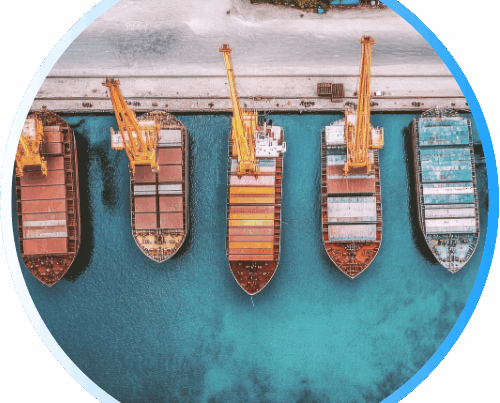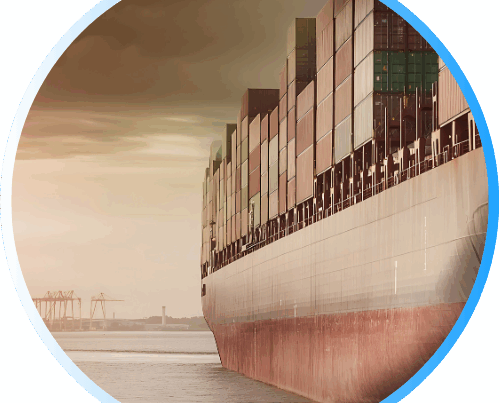Rate Related Update and Market Conditions
📌 Current U.S. Tariff Status (as of October 17, 2025)
-
U.S.–China Tariff Developments:
On October 10, President Trump announced plans to impose a 100% tariff on China starting November 1, along with potential export controls on critical software, pending executive confirmation. At an October 15 press conference, Treasury Secretary Scott Bessent suggested the U.S.–China tariff truce (expiring November 10) may be extended if China delays new rare earth export controls.
-
U.S. Government Shutdown:
Now in its third week, the shutdown has not affected CBP cargo processing, but all refunds, drawback claims, and Treasury payments remain on hold until funding is restored.
-
U.S.–China Vessel Fees:
Effective October 14, the U.S. implemented new port fees on Chinese-built and operated vessels, with China enacting reciprocal measures. Chinese-operated ships now pay $50 per net ton, and Chinese-built ships pay the higher of $18 per ton or $120 per container. U.S. vessels entering China face a CN¥400 (~$56) per ton fee, with both sides scheduled to increase fees gradually.
-
Other Tariff Updates:
On October 14, new duties took effect: 10% on lumber, 25% on upholstered furniture, and 25% on kitchen cabinets and vanities (capped at 15% for the EU/Japan, 10% for the U.K.). Tariffs will rise to 50% and 30% respectively on January 1, 2026, for non-trade-agreement countries. President Trump also hinted at potential tariffs on Spain over NATO defense spending; the EU pledged to respond if implemented.
Source: whitehouse.gov, politico.com, whitehouse.gov
Rate Related Update and Market Conditions
Ocean Trade Lane Snapshot
Trans-Pacific Eastbound (TPEB)
Capacity remains limited at roughly 60–70% through late October, with recovery above 80% forecast for November. Demand has stayed soft despite rate actions, and carriers are closely watching the market response to newly proposed U.S.–China tariffs. The October 15 General Rate Increase (GRI) has taken hold, while the Peak Season Surcharge (PSS) has been deferred to November. The first post–Golden Week SCFI reading showed a mild uptick, hinting at potential rate stabilization ahead.
Far East Westbound (FEWB)
Post-holiday recovery remains slow as carriers hold capacity cuts of about 10% per week through Week 44. Rolled cargo from early October continues to occupy available space, while labor disruptions in Belgium and the Netherlands have prolonged congestion at Antwerp and Rotterdam. Despite weak demand, most carriers are maintaining FAK and GRI levels for November in anticipation of firmer rate sentiment. Ongoing port delays could limit turnaround efficiency into early November.
Trans-Atlantic Westbound (TAWB)
European congestion persists, with yard utilization reaching 70–90% across Antwerp, Rotterdam, Hamburg, and Bremerhaven. Southern gateways such as Piraeus and Valencia report continued yard pressure and vessel waits of up to a week. Equipment shortages across Austria, Hungary, and Southern Europe remain a key constraint. Despite these operational headwinds, spot rates are holding steady at $1,800–1,900 per FEU amid moderate demand.
Air Freight Market Update
Across Asia, air freight demand remains strong and space tight following Golden Week disruptions. North China continues to see heavy volumes driven by technology and e-commerce shipments, while South China faces renewed pressure as tariff concerns trigger pre-November 1 front-loading. Vietnam and Thailand report near-full bookings, and capacity from Malaysia and South Korea remains constrained but stable. Rates are expected to stay elevated through late October as space scarcity and high seasonal demand persist.
Sources: xeneta.com, maersk.com, yangming.com, evergreen-line.com, supplychaindive.com
Asia–Latin America Freight & Port Update
1) Freight Rate & Capacity Snapshot
Hapag-Lloyd announced a General Rate Increase (GRI) effective November 1, 2025, covering Far East → Latin America (West & East Coasts, Mexico, Central America, Caribbean).
Sources: hapag-lloyd.com
2) Port Operations & Infrastructure
In Hapag-Lloyd’s Latin America operational update (Oct 14), they reported that one vessel service (Buenos Aires Express, V.2533E) will omit the port of Puerto Angamos, Chile for its next rotation.
Sources: hapag-lloyd.com

U.S. Import Volumes Expected to Rebound in Early 2026
Trans-Pacific import volumes dropped 11.8 percent year-over-year in September, but stable consumer spending and steady inventory turnover suggest renewed import activity ahead. Warehouses and major U.S. ports remain fluid, indicating that goods are moving efficiently through the supply chain. Analysts and logistics providers anticipate a rebound in import demand during the first quarter of 2026 as inventory restocking and consumer confidence support higher trade volumes.
U.S.–China Reciprocal Port Fees Mark New Trade Phase
The United States and China have both implemented new reciprocal port fees on each other’s vessels, effective October 14 2025. The measures, introduced after parallel regulatory changes in both countries, increase costs for ships built, owned, or operated under the opposing nation’s registry. Industry analysts warn that these actions could raise global shipping expenses and deepen regulatory divisions between the two economies while officials prepare for further discussions at the upcoming APEC summit.


